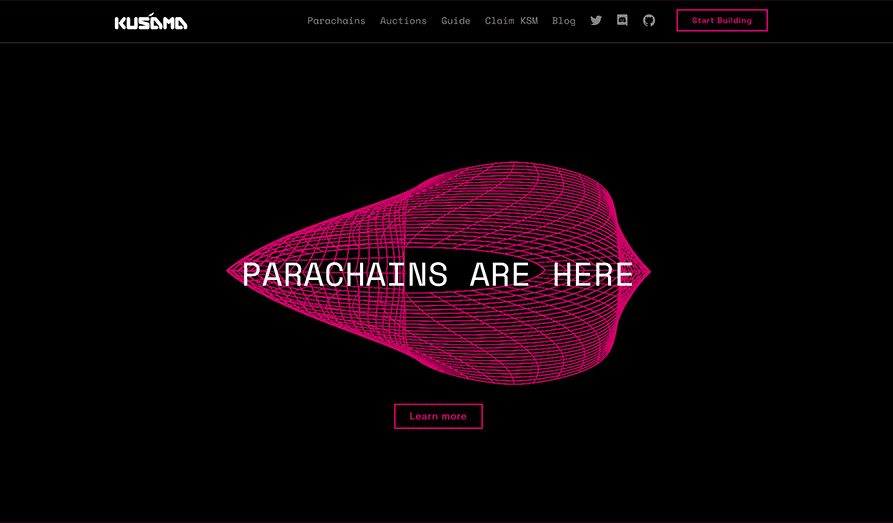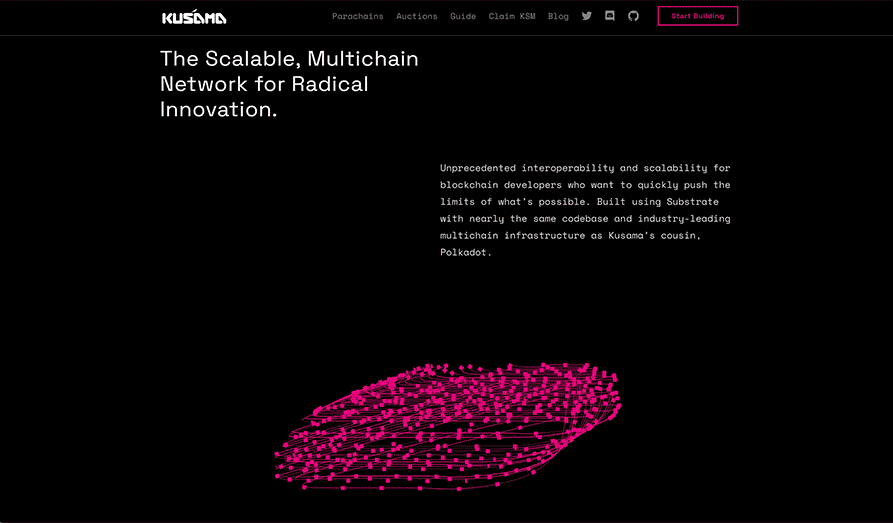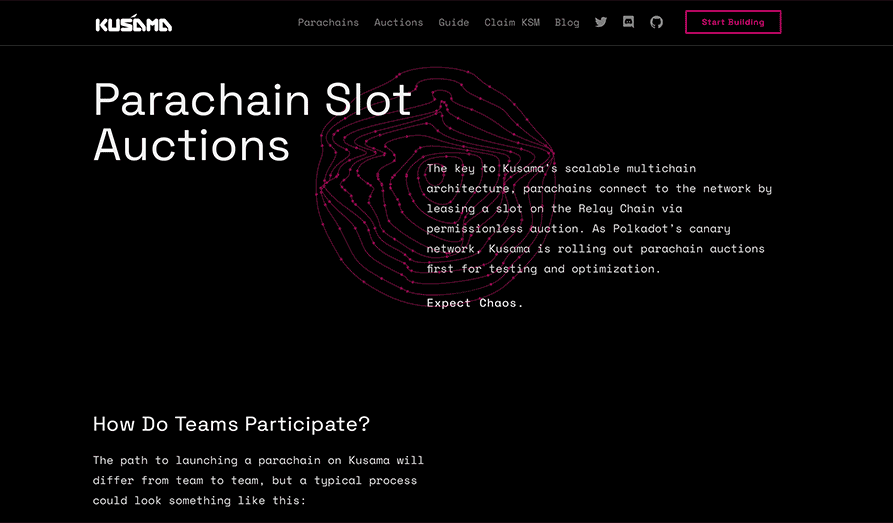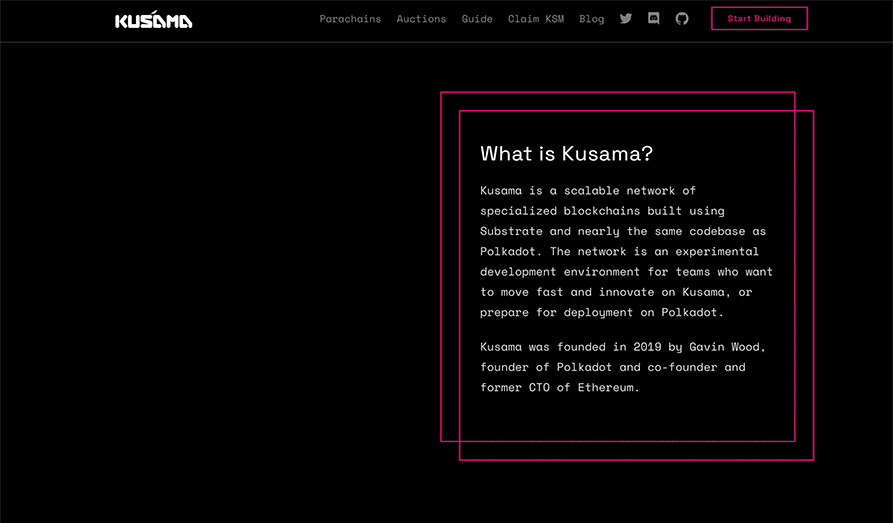
While Kasuma and Polkadot have many similarities, each has been able to live as a standalone project with its own community, governance, and complementary use cases. As a fairly popular network, many developers have been deploying applications on the Kasuma ecosystem. The network is extremely fast and can process up to 1000 transactions per second. When using the blockchain, you will have to hold KSM, the native cryptocurrency of the network. This will be used to pay transaction fees on the Kasuma network.
Briefly about Kusama Blockchain
This network was developed by Gavin James Wood in 2017, just one year after he created Polkadot. It is a great blockchain for the development of applications that experiment with new ideas. The creators of the blockchain modified its governance parameters to allow for faster upgrades. This is why it is often used by teams that want to move faster through the development phases of their apps. The network is focused on innovation and supports interoperability.
Kusama is an early release of Polkadot: a scalable, multichain network for radical innovation.CryptoLists.com
Kasuma blockchain is built on a next-generation multichain network, and it employs the newest features before they are launched on Polkadot. As a truly decentralized network, it is controlled by holders of KSM. Anyone can make their mark on the evolution of the network as they just need to participate in the open governance system. Developers can gain a lot of experience while using this network, and this is ideal because the parachain has a low barrier to entry. Kasuma brings together multiple blockchains into one sharded network, and this helps to free developers from the siloes created by legacy blockchains.
Utility of Kusama Blockchain?
Kasuma is mostly used by developers to test out their projects before releasing them to the main Polkadot network. Since the blockchain has a low barrier to entry for parachain deployment, developers can use it to identify any issues with their code. It also makes it possible for developers and teams to move faster through projects. While some projects stay on the network for the long term, most are transferred to the Polkadot blockchain. The network is also great for launching applications that don’t yet require bank-level security and robustness.
Kusama Blockchain
Release Date: September 13, 2016
Advantages at Kusama Blockchain
 + It uses Nominated Proof of Stake (NPoS) & doesn’t have a major negative environmental impact.
+ It uses Nominated Proof of Stake (NPoS) & doesn’t have a major negative environmental impact.+ The Kasuma ecosystem is fortified against hard forks.
+ Users can host an unlimited number of projects on the network.
+ It is truly decentralized and is run by holders of KSM.
Disadvantages
- The network is facing fierce competition from similar networks.
- It doesn’t enjoy the same level of security as Polkadot.
- Kasuma isn’t very stable as it is more focused on experimentation.
Costs
▪ Rated at 9/10The transfer costs on this blockchain usually range from 0.041 to 0.052 KSM per transaction. These fees are quite low, and this is one of the biggest benefits of the network. It is important to note that all transaction fees on the blockchain have to be paid out in KSM. This is the native cryptocurrency of the network.
Reputation and Buzz
▪ Reputation rated at 9/10▪ Buzz rated at 8/10
Kasuma blockchain has become quite popular among developers as it offers a wide range of benefits. Since it uses nearly the same codebase as Polkadot, many people were quick to adopt it. On Twitter, the official page of Kasuma has more than 242,000 followers, and it is heavily discussed on social media sites. The main complaint people have about the network is that they have to transfer the applications to Polkadot later on.
FAQ
Who created Kasuma Blockchain?
Kasuma was created by Gavin James Wood, a computer scientist who also helped develop Polkadot. Gavin also co-founded Ethereum with Vitalik Buterin between 2013 and 2014.
Is Kasuma Network proof of stake?
Kasuma blockchain is a type proof of stake, just like Polkadot. With the Nominated Proof of Stake (NPoS) mechanism, the coin is able to provide value without harming the environment.
Will Kasuma Blockchain overtake Ethereum?
While Kasuma is a useful project that has many benefits over Ethereum, it is highly unlikely to overtake Ethereum. This is because lots of people are already invested in Ethereum, and it enjoys the first-mover advantage.
What is the native cryptocurrency of the Kasuma blockchain?
The native cryptocurrency of this network is KSM, and this is used to pay transaction fees on the network. You can buy it from lots of exchanges and can also earn it through the bug bounty reward program.
Why is Kasuma referred to as the Canary Network of Polkadot?
This term originated from the canary birds that were used by coal miners to offer an early warning for carbon monoxide poisoning. The blockchain is similar to these canary birds in that it lets developers figure out whether there are any issues with their codes.
Screenshots from Kusama Blockchain
Native crypto coin for this blockchain? Learn more about Polkadot (DOT)
 DOT is the native coin for Kusama Blockchain. It is therefore also worth reading more about that on the link below.
DOT is the native coin for Kusama Blockchain. It is therefore also worth reading more about that on the link below.›› Read our full Polkadot review here





























